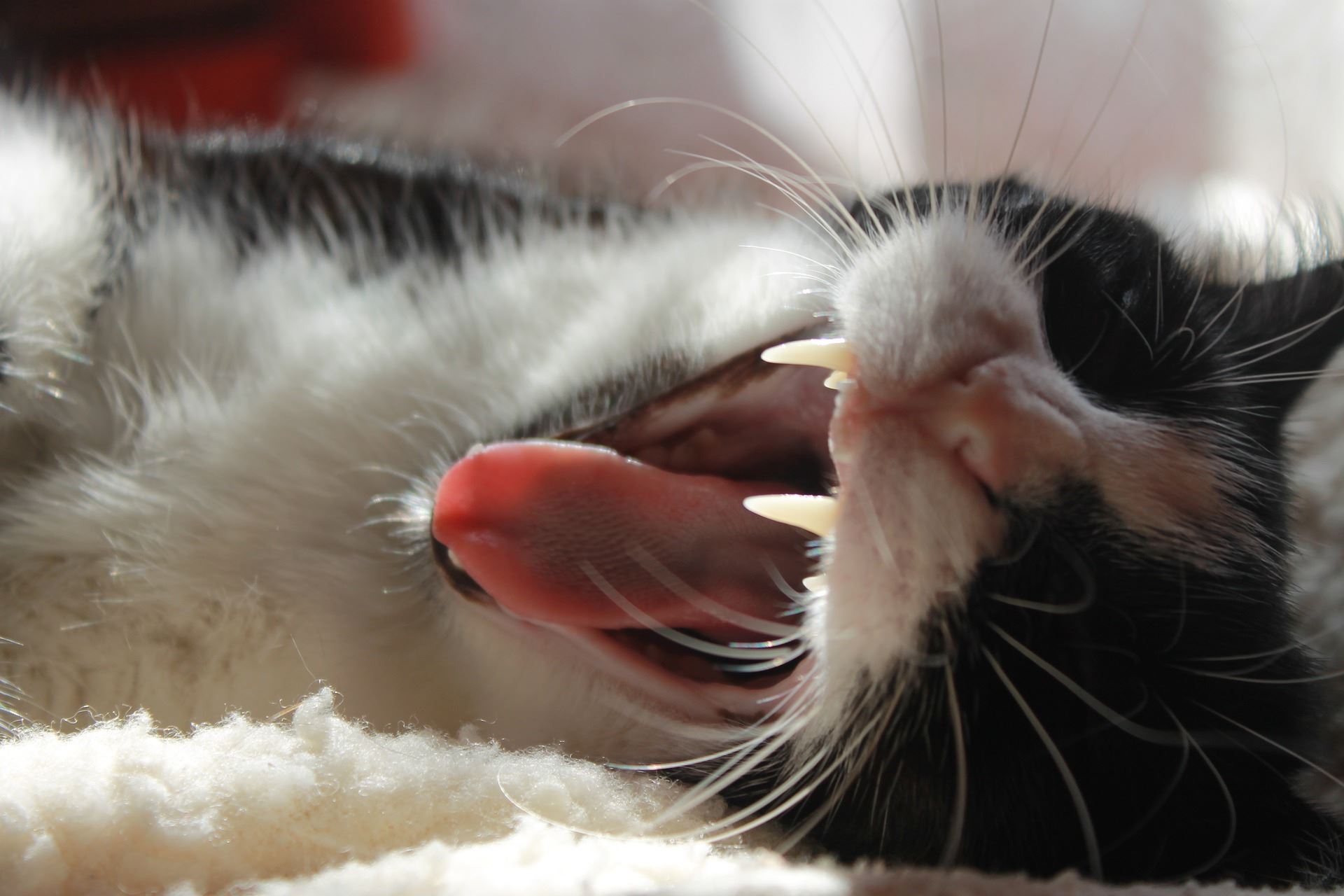-
View Larger Image

What do you think is the most common ailment our pets face? If you answered “dental disease,” you’d be right! In fact, according to studies done by the American Veterinary Dental College, by the time dogs and cats are 3 years of age, over 85% of them have some form of periodontal disease, meaning disease of the teeth, gums, and mouth.
Although it’s common, most pet parents have a difficult time knowing if dental disease is affecting their pet. But if left untreated, periodontal disease can cause tooth loss, bacterial infections, and even damage to your pet’s vital organs. Since we all love our pets, it’s important to understand what periodontal disease is, how it affects them, and what we can do to prevent and treat it.
What Is Periodontal Disease?
Periodontal disease begins when bacteria cause plaque to accumulate on the teeth and at the gum line. Within days, minerals in the saliva bond with the plaque to form tartar. The bacteria can then migrate under the gum line, causing inflammation known as gingivitis. If gingivitis is not controlled, it can progress to periodontitis, which can destroy the connecting and underlying tooth structure, including the root and even the bone below.
Bacteria from periodontal disease can also be absorbed into the bloodstream and cause disease in internal organs, including the heart, liver, and kidneys. Sadly, there is evidence that periodontal disease can cause a shortened life span for pets.
Signs of Periodontal Disease
Periodontal disease exists under the gumline, and unfortunately, by the time there are obvious signs, significant damage may have already occurred. This is one reason we recommend regular dental exams as part of your pet’s wellness care. By catching dental disease early, we can treat it more effectively and with less discomfort for your pet.
Signs of periodontal disease include:
- Bad breath
- Inflamed or bleeding gums
- Blood on chew toys or in the water bowl
- Pawing at the mouth
- Difficulty chewing (which may manifest as messy eating or a reluctance to eat)
- Facial swelling
- Excessive drooling
- Loose or missing teeth
What You Can Do About Periodontal Disease in Pets
The good news is it’s never too late to get started on preventing and treating periodontal disease. There are two key components:
- Professional veterinary dental care
- At-home dental care
A yearly professional dental cleaning under general anesthesia is recommended for most pets. This allows us to safely assess the health of each tooth, clean thoroughly under the gumline, and polish any rough tooth surfaces that may collect plaque and tartar in the future. We will take X-rays to evaluate the tooth structures that cannot be seen with the naked eye and will correct any problems related to periodontal disease. Anesthesia is necessary to do all of these things while keeping your pet perfectly still, safe, and comfortable. (Imagine trying to clean under your pet’s gumline if they’re NOT under anesthesia!)
A home care plan that includes frequent (preferably daily) tooth brushing is also in order. We can teach you how to brush your pet’s teeth, what products work best, and how to get your pet to tolerate and even enjoy this important attention.
Chewing can help remove plaque and tartar in between dental cleanings. The Veterinary Oral Health Council evaluates pet products to ensure they meet the standards for preventing plaque and tartar. Approved chews and treats must reduce plaque and tartar by at least 10% to achieve the VOHC seal of approval. Here’s their list of preferred products: http://www.vohc.org/all_accepted_products.html
If you have any questions about preventing or treating periodontal disease in your pet, please call us to schedule an appointment.
Share This Story, Choose Your Platform!

